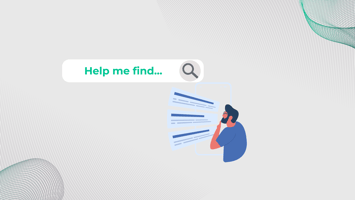Beyond Search: Is Your Association Website A Step Behind? In the association world, information is...
In the evolution of large language models (LLMs), one of the most transformative yet under appreciated advancements is the expansion of the context window. Once limited to a few hundred or thousand tokens, today’s state-of-the-art models like OpenAI’s GPT-4.1 and Google’s Gemini 2.5 can handle input sizes exceeding a million tokens, at a fraction of the cost of earlier models. This increase doesn’t just represent a bigger buffer for words—it fundamentally shifts what LLMs can do.
What Is a Context Window, and Why Does It Matter?
The context window defines how much text a model can "see" at once. In earlier models like GPT-2, this was capped at 1,024 tokens (about a page of text). That limited the model’s ability to maintain long conversations, reference prior material, reason across multiple documents, or understand the context of large documents.
Today, with windows stretching into the millions of tokens, LLMs can process entire books, vast codebases, or multi-threaded conversations without losing coherence. This increased context opens the door to projects and ideas that were previously infeasible due to lack of context or excessive cost per token. The increased context window at a fraction of the cost per token puts ideas that were previously ruled out as infeasible back on the table.
Along with new uses of AI the increased context window allows for significant improvements to existing uses of LLMs. Existing automations can now increase their context to better provide appropriate information to your users. The LLM creating your pre-event emails can now evaluate descriptions of days worth of sessions to advertise the right content to the right user. The knowledge assistant you are using can now cohesively evaluate entire standards documents.
A Leap Forward for AI Agents
AI agents rely on a continuous stream of information: user input, internal decisions, external API responses, and evolving goals. With traditional context limits, memory was a bottleneck, requiring engineered solutions like vector stores or memory databases. Now, agents can operate with far more continuity and autonomy.
Larger context windows mean:
- Fewer hallucinations due to better grounding in the full context.
- More coherent behavior over long tasks (e.g., writing a full report, planning an event, or completing multi-stage forms).
- Simpler architectures that rely less on fragile memory modules and more on direct reasoning.
This capability positions LLMs as not just chatbots but as full-fledged task-driven assistants that can rival traditional software workflows.
Why This Matters for Associations
For associations, the implications are huge. The combination of larger context windows and steadily decreasing cost per token means that ideas that seemed financially or technically infeasible just a year ago are now within reach.
Imagine an AI that can:
- Instantly understand and synthesize decades of conference proceedings, board meeting minutes, and strategic plans.
- Act as a 24/7 assistant trained on your association’s member handbook, bylaws, and event archives.
- Support member engagement with personalized interactions rooted in deep context.
With longer memory and lower operational costs, AI is no longer reserved for the tech elite. Associations of all sizes can begin to experiment with AI tools that truly understand their mission, history, and member needs.
Final Thoughts
We often marvel at improvements in model accuracy, speed, and modality. But the simple act of "remembering more" may be what truly unlocks LLMs’ potential.
As context windows grow and costs shrink, the opportunities to integrate LLMs to improve your operational efficiency increase. Combining increased context windows with AI agent tools allows for the automation of entire processes that previously needed human intervention. Together, they enable more adaptive, proactive systems that can make decisions, track context over time, and dynamically adjust to user needs without manual prompting.
This evolution significantly expands the realm of what LLM-based tools are capable of—paving the way for transformational gains in productivity, service delivery, and strategic insight.
.png?width=173&height=70&name=Betty_RGB%201%20(1).png)



